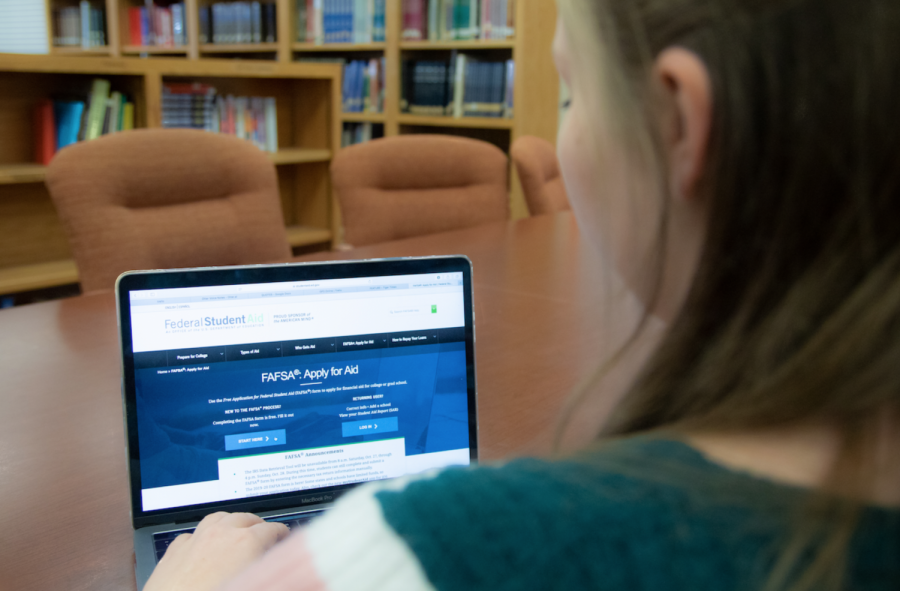Financial Aid: What you should know
Aiding students for a better future
October 2, 2018
Photo by Rivers Edwards
Junior Molly Kyles looks over the financial aid website. The FAFSA opened up on Oct. 1.
Financial student aid opened on Oct. 1 for the 2018-2019 academic year. This is a free application that can determine how much financial aid upcoming undergraduates, current undergraduates and graduates can receive. Students who are military veterans or who are currently serving in the military are also eligible to receive financial aid. Students can apply for FAFSA online through fafsa.ed.gov, through the myStudentAid mobile app, which is available on Google Play and Apple Store, or through mail by calling 1-800-433-3243.
“All students planning to attend college in the fall of 2019 are eligible to complete the FAFSA starting October 1 of this year,” said Bettie Stark, assistant principal for career and college readiness. “The purpose of the FAFSA is to see if the students are eligible for any financial aid through the federal government, which would be in the form of grants and and Pell Grants specifically.”
In order to be eligible for aid, students must meet specific criteria:
— Must be a U.S. citizen or an eligible noncitizen.
— Must have a valid Social Security number.
— Must have a high school diploma or GED certificate.
There are various documents that are required to complete the application process. Some of those proofs of documentation include a valid Social Security number from the student and/or parent if dependent, a driver’s license number if applicable and a federal tax reform, which can be IRS W-2 or a foreign tax return. If a student receives benefits or child support, information regarding this needs to be provided as well. Information on cash will also need to be provided.
If assistance is needed, one could select the tool tip, which is a white and blue question mark next to a question for more information on how to respond to it, contacting FAFSA themselves by emailing or calling, or asking a school counselor for help with providing on-hand parental information.
Before applying, it’s essential that students know the types of grants, scholarships, loans and work-study funds that FAFSA has to offer. Grants and scholarships typically do not have to be repaid, while loans are borrowed and eventually have to be paid back. Work-study funds are designated to aid students through work, which will ultimately pay off their education. In most cases, grants are need-based while scholarships are merit-based and require applications.
By browsing the FAFSA grant form below, students can see information on the different types of grants that are offered by federal aid.
https://studentaid.ed.gov/sa/sites/default/files/federal-grant-programs.pdf
FAFSA can also qualify students for jobs provided by schools based on their financial income and the school’s funding. Jobs can be on and off campus and can be paid directly through the student’s bank account or directly to the school.
“Get it done sooner rather than later. There’s a lot of money that colleges have to give out in December, January, February, rather than waiting till sometimes April or May,” Stark said.

